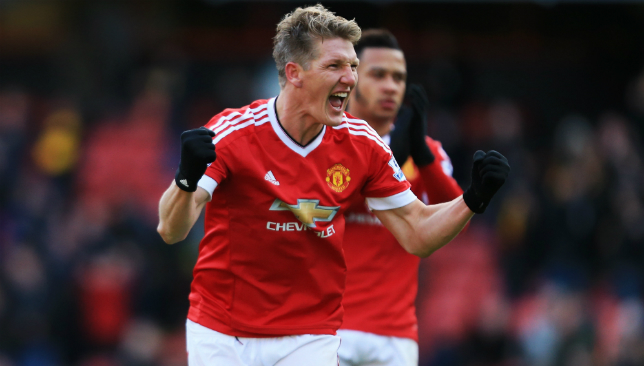
German midfielder Bastian Schweinsteiger is set to finally play football regularly again, with the 32-year-old agreeing to a deal with MLS side Chicago Fire.
While he became a legendary figure at Bayern Munich, his spell at Manchester United produced few of the moments that saw him become regarded as one of the best midfielders in world football.
Thanks to all fans, the whole staff and my teammates of @ManUtd! I will never forget my time with the club, but now it’s time for a change! pic.twitter.com/zYn2o5Cjsk
— Basti Schweinsteiger (@BSchweinsteiger) March 21, 2017
Here are five reasons it all went wrong for Schweinsteiger at Manchester United.
A World Cup-winner comes to Chicago.@ChicagoFire sign @BSchweinsteiger to a one-year DP deal: https://t.co/PNlqIaw8Td #cf97 pic.twitter.com/rhaTUc3kDZ
— Major League Soccer (@MLS) March 21, 2017
Injuries and fitness issues
In his short spell at Old Trafford, Schweinsteiger made only 18 Premier League appearances. Even accounting for the games he could have played in had Jose Mourinho been willing to select him, that’s hardly a stellar record. Indeed, he was unavailable for selection over his last few weeks at the Red Devils due to another minor injury.
The warning signs were there for Manchester United. When Bayern Munich sold Schweinsteiger to the English club, there were already murmurs that then-Bayern manager Pep Guardiola had doubts about the midfielder’s long-term fitness.
Bastian Schweinsteiger's Premier League career by numbers:
— Squawka Football (@Squawka) March 21, 2017
18 games
1,202 mins
85% pass accuracy
25 tackles won
8 chances created
1 goal pic.twitter.com/u8FzGJIQDJ
Drop in form
Arguably, even when Schweinsteiger was fit, he rarely produced the quality that had made him a mainstay at Bayern Munich. Yes, there were glimpses of his ability – his passing range, his control over a game’s tempo, his calm presence – but he was no longer a consistently world-class player in the Premier League.
It didn’t help that in Michael Carrick, United had a midfielder with a similar style of play. Louis van Gaal experimented with playing the duo together at times, but doing so meant sacrificing pace and dynamism in the middle of the park.
Sad to see a legend like Bastian Schweinsteiger leave Manchester United and the Premier League. A real shame that we didn't see his best.
— Liam Canning (@LiamPaulCanning) March 21, 2017
Lack of mobility
There was a moment at Euro 2016 when Schweinsteiger, introduced as a late substitute, produced a lung-bursting run to get on the end of Mesut Ozil’s cross and score a crucial second goal against Ukraine. While he went on similar runs at Manchester United, it was clear that overall, he was no longer mobile enough to compete week-in, week-out in the English top flight.
Arsenal’s 3-0 win over United in 2015 was a prime example. Schweinsteiger was assigned the task of picking up Santi Cazorla, but the wily Spaniard constantly pulled Schweinsteiger out of position, allowing his teammates to overrun the United midfield.
Jose Mourinho
It’s telling that two of the pre-eminent coaches of this era both deemed Schweinsteiger no longer good enough for their teams. Pep Guardiola allowed the German to be sold to United, and when Mourinho arrived at Old Trafford he immediately told Schweinsteiger that the midfielder wouldn’t be part of the first team.
It is to Schweinsteiger’s credit that he stuck to his task for the next few months, training diligently with the reserves in an ultimately successful bid to force his way back into the squad. But Mourinho’s decision proved to be the death knell for Schweinsteiger’s time at United.
Commitment to the cause
There were times when Schweinsteiger’s posts on social media cheering for Manchester United were viewed by fans almost with a sense of sorrow, as he appeared to be the consummate professional dedicated to the team despite his manager refusing to select him. However, behind the scenes, there were rumblings that other players felt differently about the legendary midfielder.
His jet-setting ways during injury layoffs, when he took trips to support his partner Ana Ivanovic at her tennis tournaments, were reportedly not received well by his Manchester United teammates, who felt he would have been better served by getting his head down and focusing on recovering to full fitness.
It's official!
— Chicago Fire (@ChicagoFire) March 21, 2017
The Chicago Fire have acquired German midfielder @BSchweinsteiger! ➡️ https://t.co/x21i9LVOUd#cf97 pic.twitter.com/ZlkKyzaxR6